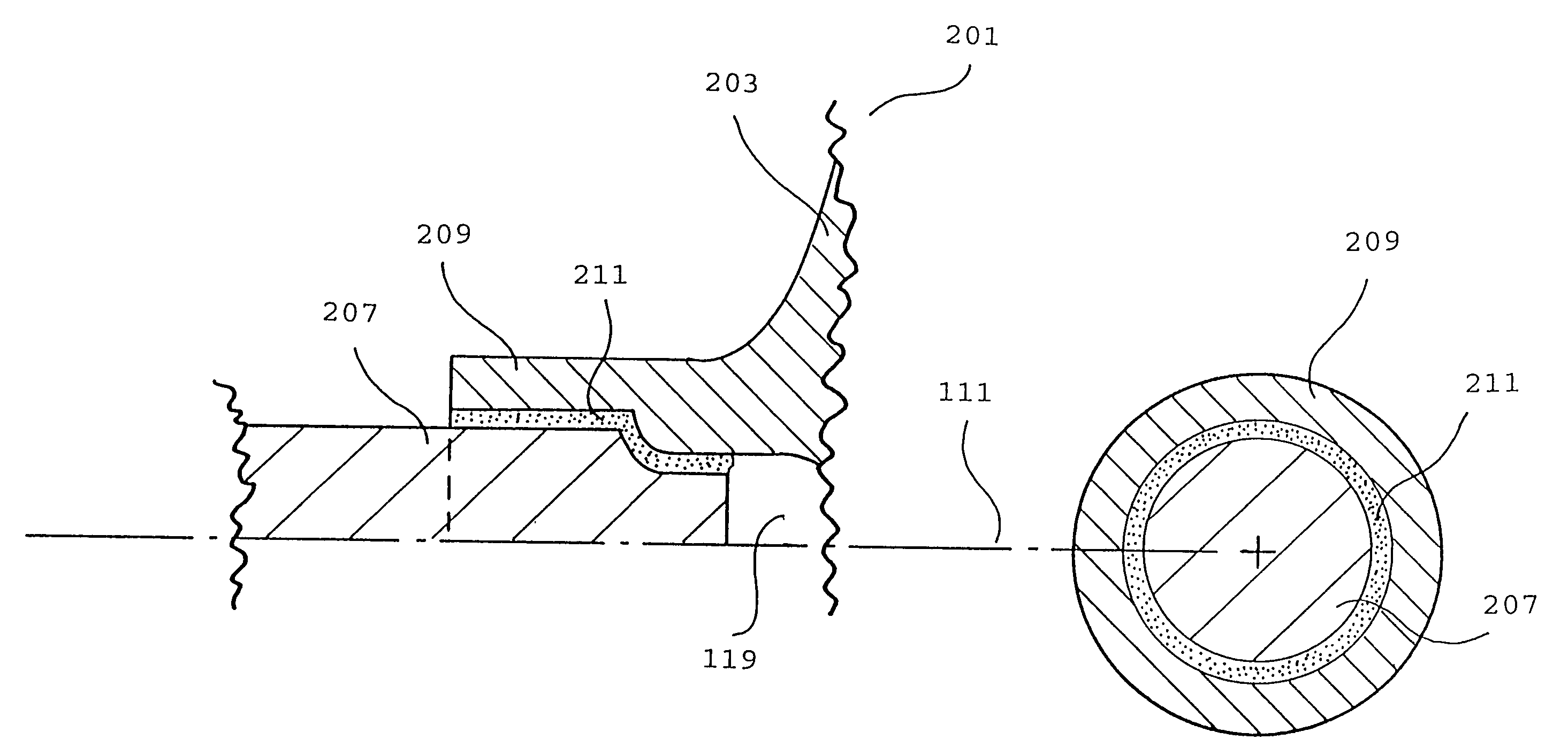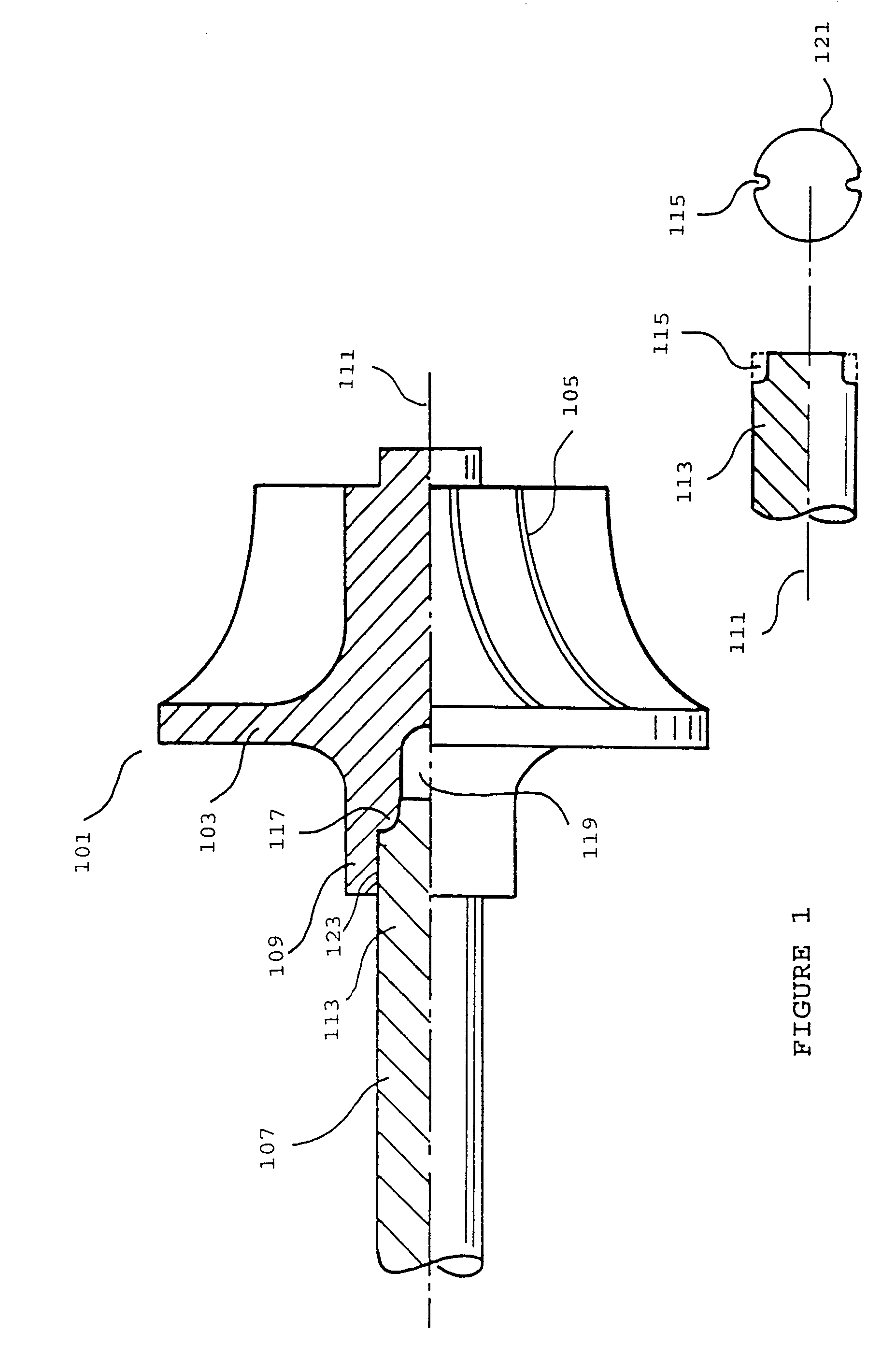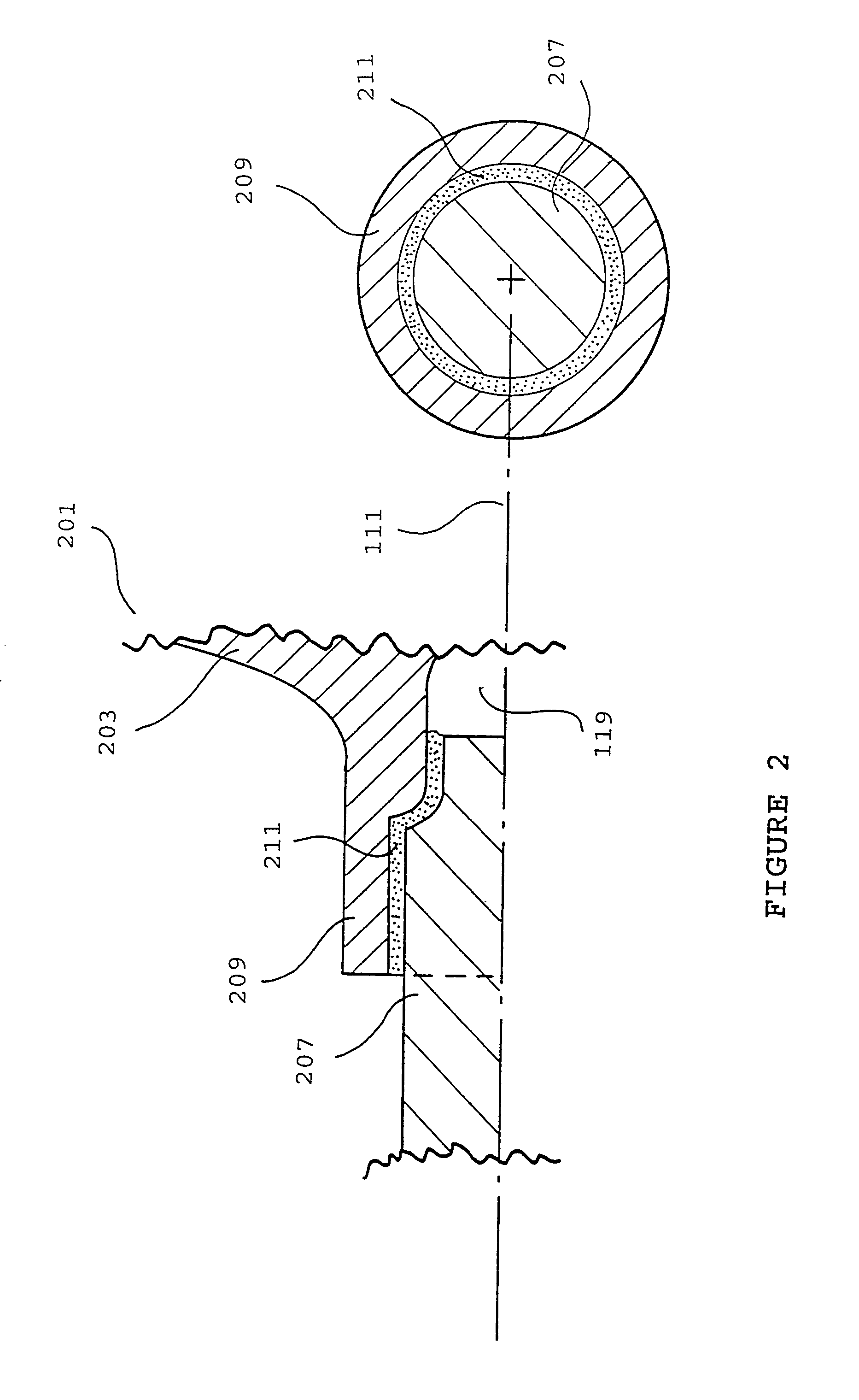Metal injection molded turbine rotor and metal injection molded shaft connection attachment thereto
a turbine rotor and metal injection molding technology, which is applied in the direction of machines/engines, mechanical equipment, manufacturing tools, etc., can solve the problems of difficult balancing the thermal expansion of the ceramic rotor and its metal casing to maintain the clearance required, and achieve the effect of high shaft torqu
- Summary
- Abstract
- Description
- Claims
- Application Information
AI Technical Summary
Benefits of technology
Problems solved by technology
Method used
Image
Examples
Embodiment Construction
[0029]A basic embodiment of the rotor shaft assembly of the present invention is shown in FIG. 1. The rotor shaft assembly 101 comprises a TiAl rotor 103, which comprises a plurality of vanes 105. The TiAl rotor 103 comprises a hub 109 disposed about the common axis of rotation 111 of the rotor shaft assembly. The interior surface 123 of the hub 109 is in intimate and positive connection with the proximal end 113 of metallic shaft 107. The hub 109 of rotor 103 is adapted for axial engagement of the proximal end 113 of steel shaft 107. In the specific embodiment of FIG. 1, the proximal end 113 of steel shaft 107 comprises a plurality of local notches 115, disposed radially, and preferably equidistantly, about the circumference 121 of the proximal end 113 of the steel shaft 107. In the mounted configuration, the local notches 115 engage corresponding lugs 117 within the hub 109 of the rotor 103.
[0030]Optionally, one or more cavities 119 are provided disposed between the interior surfa...
PUM
| Property | Measurement | Unit |
|---|---|---|
| particle size | aaaaa | aaaaa |
| particle size | aaaaa | aaaaa |
| temperature | aaaaa | aaaaa |
Abstract
Description
Claims
Application Information
 Login to View More
Login to View More - R&D
- Intellectual Property
- Life Sciences
- Materials
- Tech Scout
- Unparalleled Data Quality
- Higher Quality Content
- 60% Fewer Hallucinations
Browse by: Latest US Patents, China's latest patents, Technical Efficacy Thesaurus, Application Domain, Technology Topic, Popular Technical Reports.
© 2025 PatSnap. All rights reserved.Legal|Privacy policy|Modern Slavery Act Transparency Statement|Sitemap|About US| Contact US: help@patsnap.com



